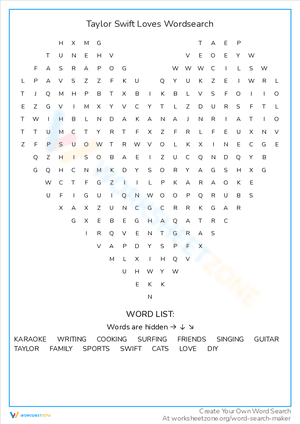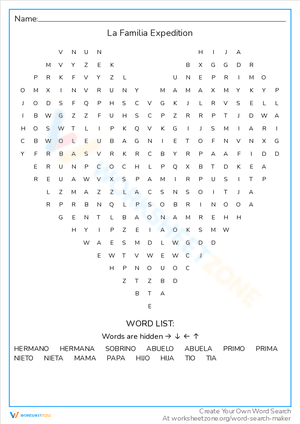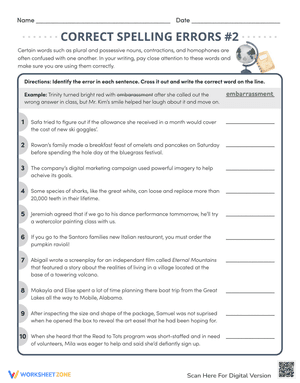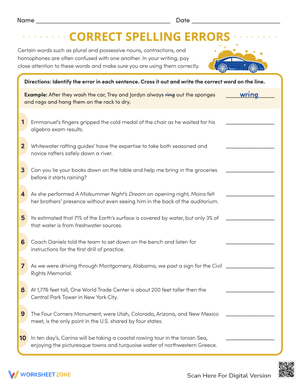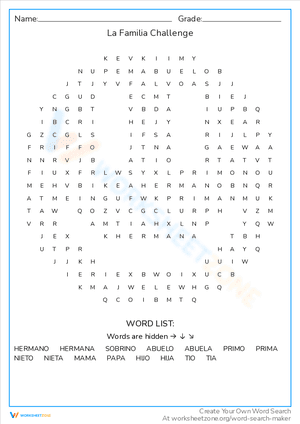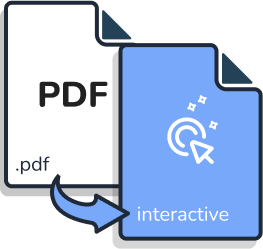Spelling is a skill that should be mastered even if it isn't always a sign of a child's intellect. That's because bad spelling habits will persist when a pupil advances in grade level and expands their vocabulary. Misspelled words may make blunders in professional communication as well as be bothersome for professors who are correcting papers. More crucially, spelling issues may let teachers and parents know whether a student has dyslexia or another undiagnosed learning disability.
You can find a useful technique for learning to spell in the below article: spelling worksheets.
Benefits of Good Spelling from the Early Ages
Even though most word processing software has a spell checker, you should still double-check everything to ensure that none of your words have been misspelled. This is due to the fact that word context is something that is not always understood by computerized spell checkers.
A little mistake such as misspelling a word may not seem like a big deal, but it can really reflect extremely negatively on the writer. It shows either that the author is not concerned enough about their work to proofread it or that he does not know enough about his subject to correctly spell linked terms. Either way, it is not a good sign. In any case, the reader will be less inclined to accept the authority of the writer if the writing contains spelling mistakes.
Below are some of the significant benefits of having good spelling and building a spelling habit from the early years:
Development of communication skills
Children need to develop their communication skills in order to mature and have healthy relationships with the world around them. Body language, gestures, and basic vocalizations are often the first steps in the communication process. As children mature to the point where they are able to communicate verbally, they naturally gain an early comprehension of their original language.
It is considerably more difficult to make the link between vocal expression and written communication; in order to do so, you will need to observe others as well as get training formally. During this stage of development, students are taught the fundamental abilities necessary for effective written communication, such as the capacity to recognize letters just by sight and to construct links between written patterns and vocal emotions.
Literacy development
The skill of accurately building words from their constituent letters is known as spelling, and it is one of the fundamental components necessary for good writing. Being confident in one's spelling leads to being confident in one's reading abilities overall. It has been shown that improving one's comprehension abilities may be facilitated by developing the capacity to identify connections between words that have a common etymology and comprehend the interconnections between words.
According to the findings of certain studies, reading, writing, spelling, and understanding are all interconnected in important ways. Spelling instruction was proven to increase reading skills in a research study that was carried out by L.C. Ehri for the Scientific Study of Reading. The study concluded that this was due to the fact that it develops a learner's understanding of the alphabetic system as it is employed in reading.
Teaching young students how to spell words correctly by teaching them the tactics, norms, and ideas that will help them expand their vocabulary is beneficial to them in all facets of their education as well as in their day-to-day lives.
Learners who have a comfortable familiarity with letter patterns and word structures are able to read and understand texts that are more difficult. They are also equipped with the linguistic skills required to better communicate their own thoughts via both written and vocal means of communication.
Many new students find the link between how words are written and how they are pronounced to be confusing and arbitrary. However, in order for pupils to develop self-assurance in their communication skills, it is necessary for them to have a solid fundamental understanding of the connections that exist between forms, letters, sounds, and meaning.
How Do Kids Learn Spelling?
In the first and second classes, children are taught how to correctly spell words. The vast majority of early spelling terms have to be committed to memory. This is especially true with terms that are used often in service roles. The classes will often be divided into sets, and the teachers will provide quizzes on a weekly basis.
Learners will be helped to detect patterns via the explanation of rules as well as the possible grouping of concepts that are taught that match the same rule. As children improve their reading skills, they become more likely to run upon terms they are acquainted with. They improve their spelling as a result of this.
The more that students use their terms in writing tasks, the higher the likelihood that they will acquire them by either utilizing the correct technique, repeating it, or making errors that they must later fix. The more that kids utilize their vocabulary, the more likely they are to acquire them.
The majority of children have received instruction in spelling as a component of their study of language arts. The method that is used most often by instructors is to provide each student a list of words, typically at the beginning of the week, and then encourage the students to study and memorize how to spell those words in preparation for a test that will be given on Friday. You undoubtedly recall doing something similar to this when you were a student.
It is a straightforward assignment in memory work, which may also involve some written practice, which may occasionally involve the use of a class spelling bee, which may involve the student spelling the words out loud to an adult at home, but in any event, students must be prepared for a test on Friday. When the exam finally arrives, you will get your score, the previous list will be removed and a new list will take its place, and the cycle will continue.
The student will be able to decide how to correctly spell other words that were not even included on this list if they use the following alternative method to achieve the same goal using the same list of words. This method is presented here as an alternative means of accomplishing the same objective.
Step 1: Break Things Down Into Rules
To begin, we will teach the pupils that every word is made up of one or more individual components. For instance, the term "useless" is made up of two separate components: use and less. After that, we will instruct them on how to construct words by combining their constituent parts, such as hope and less to form hopeless. In the end, we will instruct them that there are certain rules that govern the manner in which you are permitted to place pieces together, such as the rule that begins with a "e."
According to the final "e" rule, if the phrase you are beginning with ends with a "e" (for example, hope), and you want to add a term component that starts with a vowel letter (for example, ing), you must drop the final "e" before you add the ending. An exception to this rule is when the word you are beginning with does not end with a "e." (e.g. hope + ing = hoping).
Step 2: Use Spelling Worksheets
We now hand each student a spelling worksheet that contains examples of the final "e" rule (such as hoping) as well as non-examples of the final "e" rule (such as hopeless), and we ask the students to use their rules to determine how to correctly spell each word on the worksheet. For example, hoping is an example of the final "e" rule, while hopeless is not. The list of 25 words that were provided for the conventional assignment has been included in our sheet of 40 words.
Benefits of Using Spelling Worksheets
Students discover the parts of words
The rule-governed method has the initial benefit of teaching children that words are composed of pieces. As the initial job in learning the words, the instructor might offer the pupil's word lists and instruct them on how to break the words down into their component pieces. Giving them smaller spelling units to work with, would benefit the pupils. Use the conventional list as a practice example.
The second technique shows the pupils that, if they are aware of the rules, word pieces may be combined. That is not what the conventional list teaches. What's more, it doesn't precisely explain how to connect words. Simply commit them to memory.
The last "e" rule is mostly known irrationally by most individuals. They omit the "e" since they already understand how to spell the words or simply because they are aware that omitting the "e" makes the word seem odd. They were not required to explain the rule in detail as to why they dropped the "e" or did not. They just have a sense of when something is appropriate, not why.
Students are able to review their own work
The second key benefit of the second approach is that schoolchildren could use the principle to assess the word's spelling accuracy. They are able to check their own work. Yes, there are a few exceptions, but for the most part, all words are covered by the rule.
It is possible to ascertain the student's fluency
Finally, we can identify when a pupil actually understands how to apply the rule. Humans can write in cursive at a rate of 20–30 words per minute. We can tell whether a pupil really "gets it" if they can apply the rule and fill in the gaps for 20–30 words accurately in one minute with no more than two mistakes.
A person cannot write fluently or apply the rule fluently if production is less than 20 words per minute. Check for mistakes or how many times they can write a popular seven-letter word in a minute. This is how Precision Teaching is used as a measuring system; in coming blogs, we'll go into more detail about this approach.
Try it out with your children or grandkids by printing out this practice sheet. Send a copy to every educator you know, including classroom assistants, parents, homeschoolers, tutors, and autism therapists. You can very much count on the fact that most of them will learn something new from it.
Spelling Worksheets for Reading and Writing Fluency
Spelling becomes an increasingly important component in the process of developing reading and writing fluency after children have mastered the alphabet and begun to make connections between sounds and letters.
Because of this, we have designed and compiled a wide portfolio of spelling worksheets to ensure that your child has all of the resources, techniques, and exercises required to make spelling natural and easy, regardless of whether they are just starting to identify words or are getting prepared for the difficulties of middle school.
Spelling may be taught to younger students in a casual and approachable manner via the use of games like sweepstakes, interactive alphabetical tables, and imaginative coloring sheets. These are all excellent resources. Worksheets that guide children through the process of sounding out words using images, locating and writing missing letters, and discovering and internalizing significant spelling patterns are all beneficial for children as they become a bit older.
When older children are taught to spell, the activity becomes more amusing when homophones and homonyms are used to create humorous puns. You can go beyond proper practice sessions with your son at home to enhance their spelling based on reading together. This is because simply being exposed to old and new words on such a consistent basis can have a massive effect on spelling and vocabulary skills.
Take a Huge Resource of Spelling Worksheets
Even for the most ardent of writers, correct spelling may be a challenge. Students in preschool through fifth grade may easily enhance their spelling abilities and confidence by working through spelling worksheets and printing out handouts. From our huge resource of Worksheet Zone spelling worksheets, you can learn about a variety of grammatical topics, including sound blends and digraphs, long and short vowel sounds, and suffixes, as well as more complicated rules regarding the silent e and homophones.
Check out our other language arts worksheets on Worksheet Zone if you're looking for additional exercises related to language arts!
